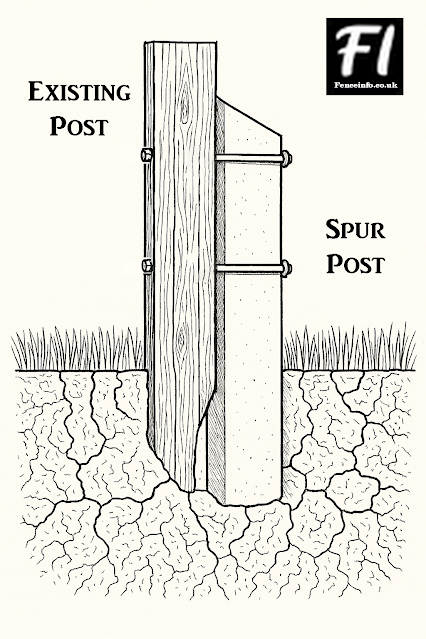What is a Fence Spur Post?
A fence spur post, commonly known as a concrete spur or repair spur, is a structural support used to reinforce or repair timber fence posts. Over time, wooden posts can weaken due to rot, weather damage, or ground movement. Rather than replacing an entire fence, a spur post can be installed to provide additional stability and prolong the lifespan of the fence.
Materials Used for Fence Spur Posts
The most common material used for fence spur posts to repair fences is concrete. Concrete spurs are highly durable, resistant to rot, and provide long-term support against environmental factors. They are typically available in different sizes to suit varying fence post dimensions and soil conditions.
While concrete is the standard choice, some metal spurs are also available. These are often galvanised or coated to prevent rust and are typically used for lighter fence repairs or temporary reinforcements. Wooden spur posts are another option, providing a more natural aesthetic and blending seamlessly with wooden fences. However, they are less durable than concrete and may require additional treatment to resist moisture and decay. The most common material used for fence spur posts is concrete. Concrete spurs are highly durable, resistant to rot, and provide long-term support against environmental factors. They are typically available in different sizes to suit varying fence post dimensions and soil conditions.
While concrete is the standard choice, some metal spurs are also available. These are often galvanised or coated to prevent rust and are typically used for lighter fence repairs or temporary reinforcements. Wooden spur posts are another option, providing a more natural aesthetic and blending seamlessly with wooden fences. However, they are less durable than concrete and may require additional treatment to resist moisture and decay.
Why Use a Fence Spur Post?
Fence spur posts offer several benefits, making them a popular choice for property owners and fence installers:
Cost-effective Repair Solution – Instead of replacing an entire fence post, adding a spur is a more economical option.
Extended Fence Lifespan – Reinforcing a weakened post prevents further deterioration and extends the overall durability of the fence.
Increased Stability – Spurs help secure fence posts in loose or shifting soil, reducing the risk of leaning or collapse.
Rot and Weather Resistance – Since the spur remains partially buried in the ground, its durable material protects the fence structure from moisture and decay.
Standard Use in Certain Products – Some fencing products incorporate spur posts as part of their design rather than just for repairs. For example, Jacksons acoustic fencing with wooden posts uses metal spur posts over certain heights to support the weight of the fence and withstand wind loading, as there are no gaps in the boards.
How to Fix a Fence Spur Post to a Standard Post
Installing a fence spur post is a relatively straightforward process but requires the right tools and materials. Here’s a general step-by-step guide:
Dig a Hole – Excavate a hole next to the existing fence post, usually around 450–600mm deep, depending on the height of the spur.
Position the Spur – Place the spur in the hole, ensuring it sits flush against the damaged or weakened fence post.
Drill and Secure – Drill holes through both the spur and the timber post, then secure them together using coach bolts and washers.
Pour Concrete – If using a concrete spur, fill the hole around it with a concrete mix, ensuring it is packed tightly for maximum support. For wooden spurs, backfilling with compacted soil or gravel may be an option.
Allow to Set – Let the concrete cure for at least 24 hours before applying any weight or pressure to the fence.
Fence spur posts are an excellent solution for reinforcing timber posts and maintaining the integrity of a fence. Whether you are repairing a damaged post or strengthening a new installation, spurs provide a practical and long-lasting alternative to full post replacements. With the right installation technique, your fence can remain sturdy and secure for years to come.
You may also find our blog on how to build a fence with strong foundations






